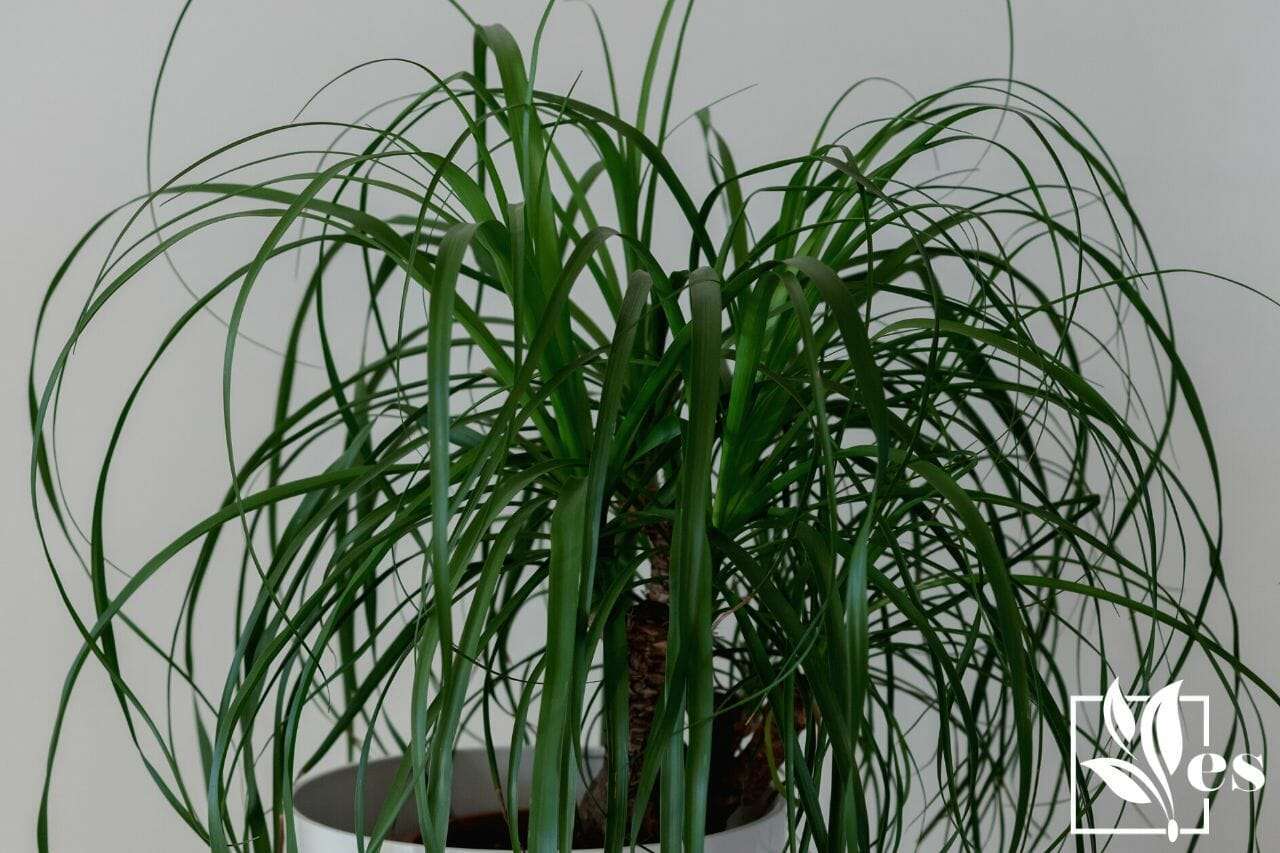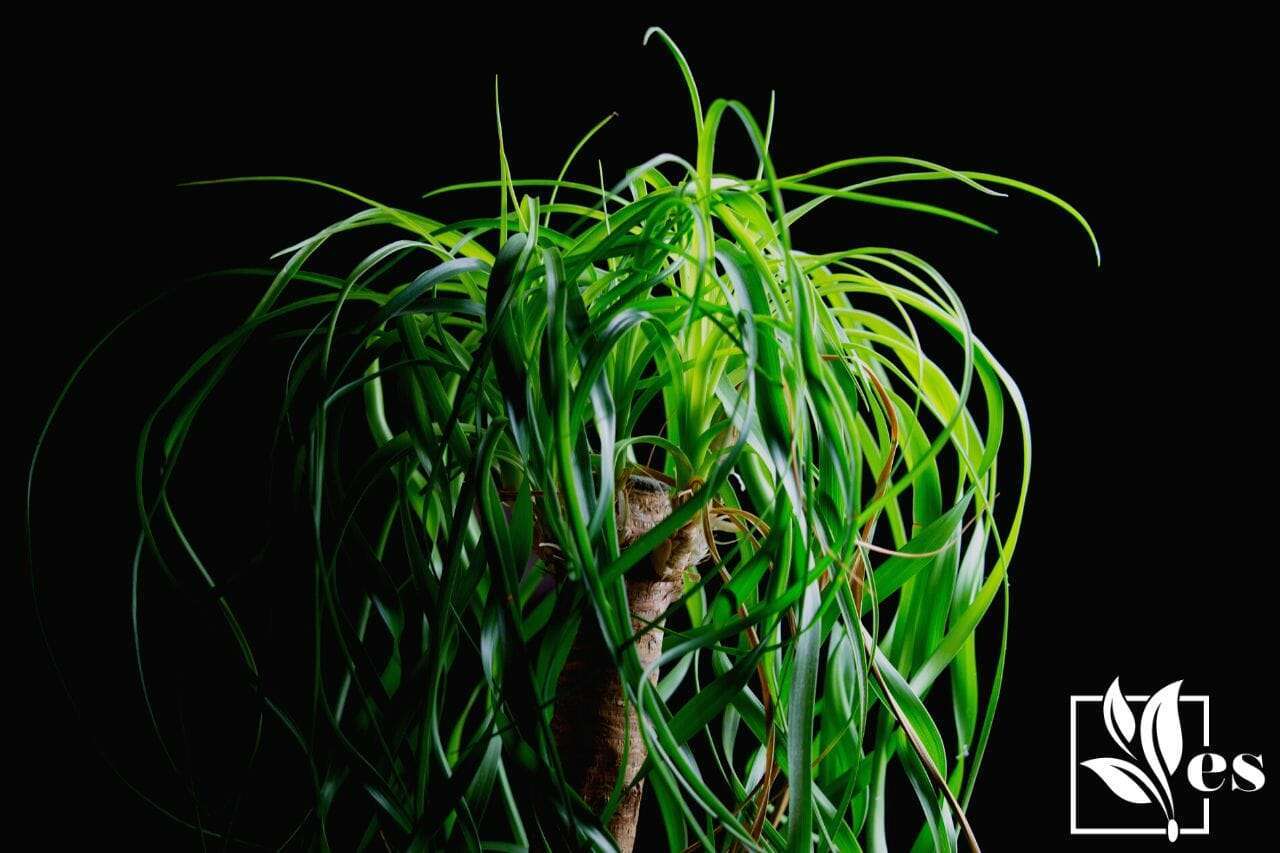If you’re scared about your ponytail palm dying, rest assured that most damage can be reversed if the problem is caught correctly. Overwatering, underwatering, excessive fertilizer, and lack of fertilizer are some of the reasons that the plants are losing their healthy look.
 This article explains why your plant seems to be dying and provides solutions to each of these problems.
This article explains why your plant seems to be dying and provides solutions to each of these problems.
JUMP TO TOPIC
- Why Is Ponytail Palm Dying?
- How To Save Your Palm From Dying
- – Cut off the Damaged Roots and Replant in Dry Soil
- – Water Your Plant When Needed
- – Use the Technique of Bottom Watering
- – Dilute the Fertilizer With Water Before Adding It to the Plant
- – Find Out Which Nutrients the Soil Is Deficient In
- – Choose an Appropriate Type of Soil To Grow Your Plant In
- – Use Pesticides to Clear Out All the Pests From Your Plant
- – Keep Your Plant in Indirect Sunlight
Why Is Ponytail Palm Dying?
The ponytail palm is dying because of underwatering and lacking fertilizer, which are some common ponytail palm problems. Moreover, like all plants, they are susceptible to pests, need to grow in appropriate soil, and require a specific temperature to remain healthy.
– Overwatering
The ponytail is a desert plant that does not require much water to survive. However, overwatering can cause your plant to develop root and stem rot, which is highly dangerous.
The roots become soft and squashy and start rotting. The leaves turn yellow, and the stem can also become soft due to excess water. So, look out for these overwatering signs.
Overwatering can also be caused due to water drainage issues and why your leaves turning yellow.
– Underwatering
Although ponytail palms are plants that can go long periods without water, they cannot be neglected completely. The warning sign of underwatering is usually a shrinking trunk.
The plant’s trunk stores water; once the reserves are over, it will get smaller, and the leaves will turn brown and curl. The soil will also feel dry if you touch it.
– Excess Fertilizer
Putting excessive fertilizer could also cause it to die. The symptoms of over-fertilization are leaves with brown tips and leaf and root burn.
The situation can be even worse if over-fertilization occurs with a palm fertilizer rather than a more appropriate succulent one.
– Lack of Fertilizer
If you’ve not been watering your plant excessively but still notice some yellowing leaves, it could be a sign that your dying palm leaves aren’t getting enough nutrients.
Usually, in the case of yellow leaves, it points to a deficiency of nitrogen, magnesium, and manganese, but it is always better to make sure before you add these nutrients.
– Pest Attacks
All plants are vulnerable to pest attacks, including your ponytail palm. So, if you spot a whitish substance on the leaves of your plant, it means Mealybugs are the culprits you’re looking for.
They suck the sap, which is the life substance, from the plants causing the leaves to turn yellow and fall off. They also make it difficult for the plant to photosynthesize, which can be fatal.
Spider mites are another type of pest you need to be wary of. You know these pests have attacked your plant if you see small spider webs across the leaves.
– Wrong Type of Soil
The wrong type of soil could potentially harm your ponytail plant. For example, if the soil retains too much water and does not drain well, it could cause the stem dying to rot even if you don’t overwater your plant.
– Low Temperature
Being succulent, the ponytail palm crown collapse can be due to harsh winters and very low temperatures.
If left to nature on freezing nights, its leaves are likely to turn brown and blacken, and the trunk could turn soft. The plant could also get infected.
How To Save Your Palm From Dying
The ponytail palm can be saved from dying, and the damage can always be reversed by:
- Cutting off the damaged roots
- Watering the plants if needed
- Using the technique of bottom watering
- Diluting the fertilizer with water
- Finding out which nutrients the soil is deficient in
- Using pesticides to clear out all pests
- Keeping the plant in indirect sunlight
– Cut off the Damaged Roots and Replant in Dry Soil
If your plant has been overwatered, it is likely that stem and root rot have already set in. In this case, you need to uproot your plant, carefully cut off the damaged parts of the root as fast as possible and replant it in dry soil that suits its needs.
Make sure that the pot with your replanted ponytail palm isn’t too big, making it difficult for the soil to drain and cause water to collect. It is also recommended that you use a clay pot as it helps absorb excess water, and the soil dries faster.
– Water Your Plant When Needed
The obvious solution to underwatering is providing adequate water to the plant for it to flourish again while also being cautious about the risk of overwatering.
Ensure that you don’t overwater your plant to the extent that the roots drown in the excess water.
– Use the Technique of Bottom Watering
For this technique, ensure that your palm pot has drainage holes at the bottom for water to seep through. Next, take a basin of lukewarm water and place your plant pot in it. The drainage holes will ensure that the plant can soak up the water.
Leave the plant like this for forty-five minutes until the soil feels moist. Then, drain the excess water and return the plant to its original spot.
– Dilute the Fertilizer With Water Before Adding It to the Plant
To solve the problem of over-fertilization, it is best to dilute the fertilizer before adding it to your ponytail palm soil. In the case of a ponytail palm, these plants are better at coping with fewer nutrients, and excess fertilizer could potentially be very harmful.
Always ensure that you’re using the right fertilizer, mainly a succulent one instead of a palm one, and fertilize your plant once or twice a month only during the growing months.
– Find Out Which Nutrients the Soil Is Deficient In
A basic soil testing kit can help you determine what nutrients are deficient in the soil, which will help you choose the most appropriate fertilizer for your ponytail palm plant. Although these plants don’t usually require fertilizer to grow, the growth rate is very slow if left to their own.
Liquid fertilizers are always recommended as they get dissolved easily into the soil. This plant mainly requires potassium, phosphorus, and nitrogen, with the nitrogen content needed to be lesser than the other two nutrients. Coffee grounds can be used for fertilization if you’re looking for organic sources.
– Choose an Appropriate Type of Soil To Grow Your Plant In
The ponytail palm requires fast and well-draining soil. Organic matters like perlite and vermiculite can also help in this issue if added to the mix.
Always ensure that the soil is dry and does not retain water. Also, add plants that will be beneficial to your palm tree.
– Use Pesticides to Clear Out All the Pests From Your Plant
If Mealybugs have infested your ponytail palm, you must get rid of them as soon as possible. Neem oil has proven to be an effective deterrent to these pest issues. 70% isopropyl rubbing alcohol is another solution that can kill Mealybugs.
It must be sprayed directly on the plant or rubbed on the leaves of the ponytail palm. Another easy remedy is a combination of alcohol, water, and dish soap, with water and alcohol being one part each, which can be used as a pesticide spray.
To get rid of the mites, make a solution of dish soap and water and apply it to the stem of the plant using a cloth.
– Keep Your Plant in Indirect Sunlight
Although the ponytail palm thrives in warm conditions, it also risks being burnt if constantly kept in direct sunlight.

Therefore, it is best to place your plant in a sunny area where it receives a lot of light but is not directly exposed to the sun.
Final note:
Ponytail palms are originally desert plants and require little maintenance to survive.












